The Best Drill — Buyer’s Guide, Review, and Comparison
Most Popular Drill Categories
Drill Categories
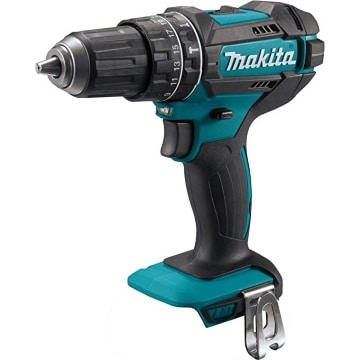
Cordless Drill
Driven by rechargeable lithium-ion cells, cordless drill units allow for greater operational freedom than mains-connected machines. Available in the key drill categories of drill/driver, hammer, rotary, and 90-degree tools, they offer a driving or boring solution for every project — from light craftwork through to hardcore demolition jobs.
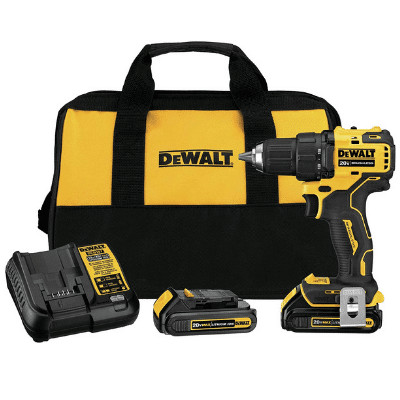
Drill Driver
Providing powered screwdriving and hole boring, cordless drill driver units are the consummate DIY and light-contractor machines. Driven by long-lasting lithium-ion cells, these tools are ideal for cabinet making, shelf mounting, and fence building. Furthermore, compatible with a plethora of attachments, they can function as sanders, polishers, mixers, and rust removers.
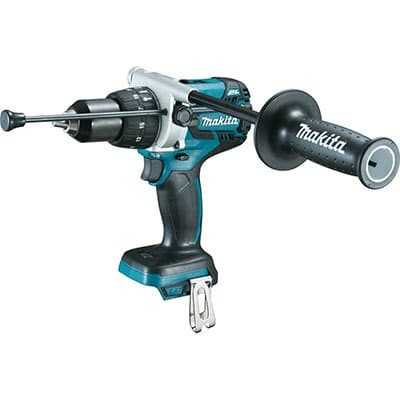
Hammer Drill
Knocking out a pounding motion in addition to the traditional drill’s rotational movement — hammer drills permit you to effortlessly bore into dense masonry, brickwork, and concrete. Available in both corded and cordless formats, they range from standard hammer tools that can double up as timber and metal drills, through to hardcore rotary units that can be utilized for extreme demolition projects.
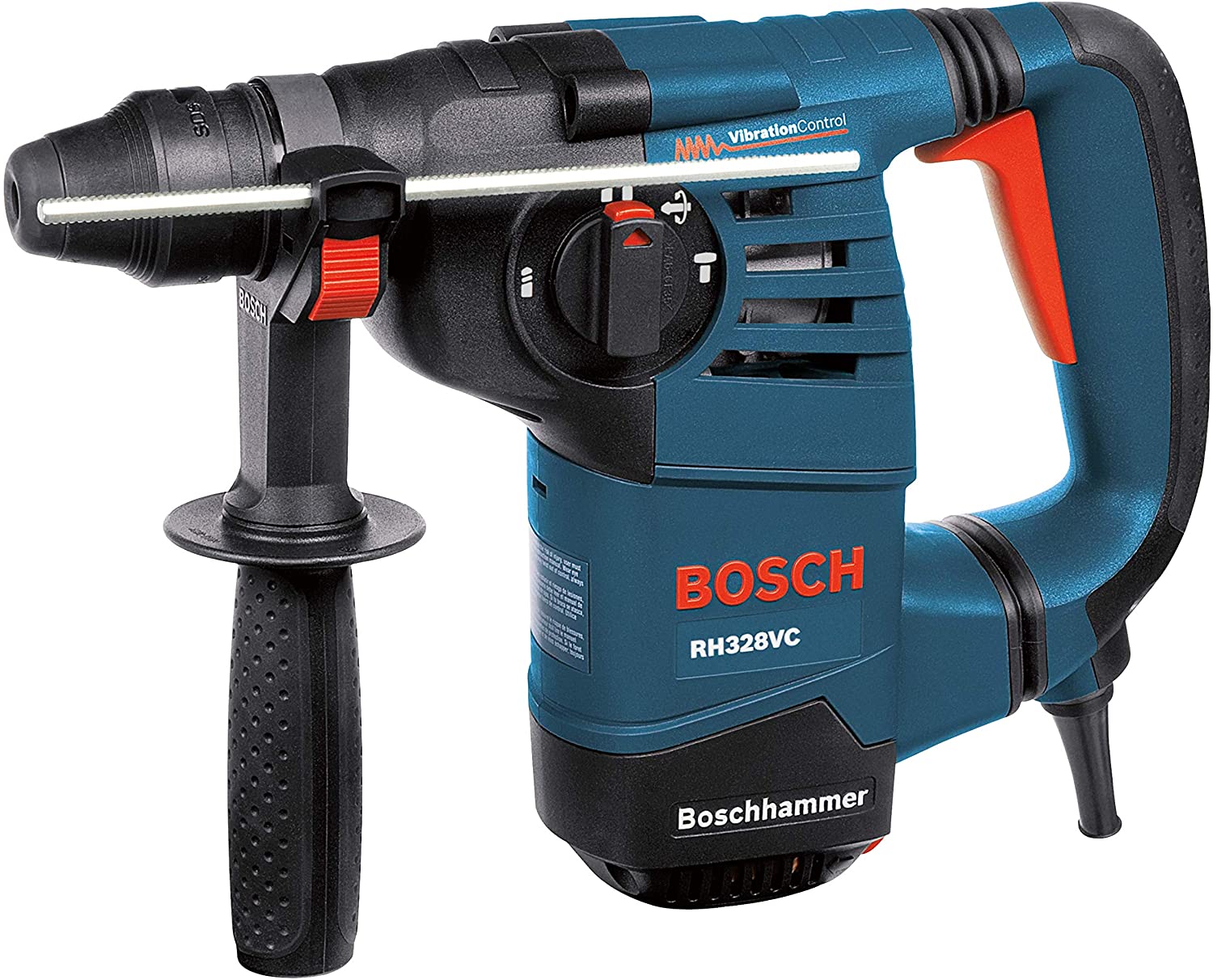
Rotary Drill
The titans of drilling tools, rotary hammer drill units are the go-to machines for tackling concrete, brickwork, cement, and masonry. Whether boring or chiseling, these cordless and corded drills offer unsurpassed grunt through their high amperage motors, SDS+ chucks, and elevated torque. Excelling in outdoor fabrication, property improvement, and dense material demolition — they’re ideal for the dauntless DIYer or pro-contractor.
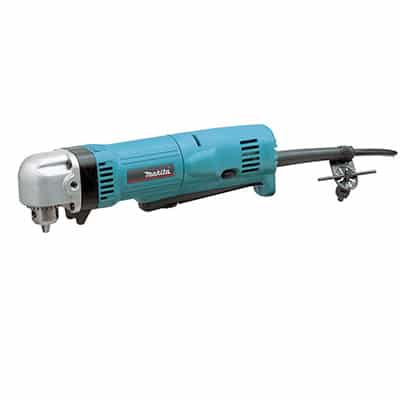
Right Angle Drill
Able to squeeze into the tightest of spaces — right angle drills are the maestros of close-quarter drilling. Boasting a snub head, 90-degree chuck, slimline build, and lightweight construction — they make accessing restricted areas such as beneath sinks and between floor joists effortless. And, available as corded, cordless, or pneumatic machines — there’s an ideal tool for those DIYers or trade pros who demand consistent power, elevated portability, or the ultimate in grunt and speed.
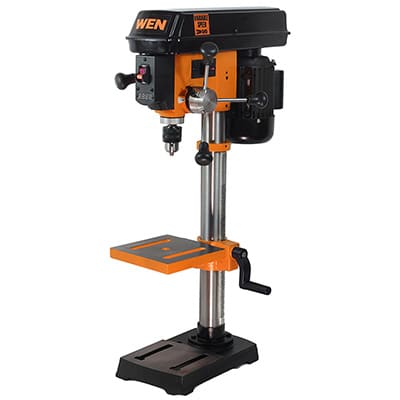
Drill Press
The drill press is the master of drilling accuracy. With a pillar-mounted chuck or arbor, these artisan-worthy tools deliver unsurpassed perpendicular drilling, reaming, and screw tapping. With models that can be multi-medium compatible or material-specific, they can address plastic, timber, and metals. Furthermore, available in floor-standing, benchtop, and magnetic foot formats — they are suitable for a plethora of DIY and trade projects.
Our Drill Top Picks In Each Category
| IMAGE | PRODUCT | DETAILS | ||
|---|---|---|---|---|
|
Best Cordless Drill 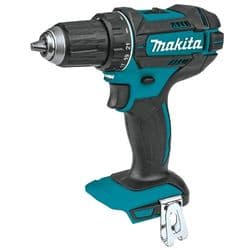
|
Best Cordless Drill
|
Makita XFD10Z
|
Features
|
Check Price at Amazon Review Makita XFD10Z Review Makita XFD10Z Review |
|
Best Drill Driver 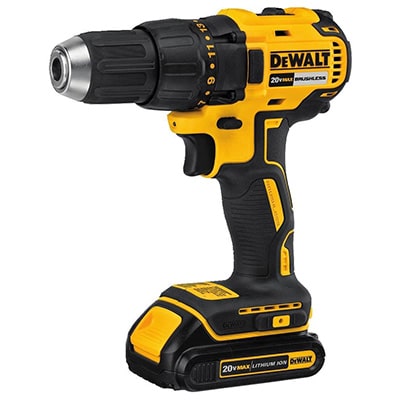
|
Best Drill Driver
|
DeWalt DCD777C2
|
Features
|
Check Price at Amazon DeWalt DCD777C2 Review DeWalt DCD777C2 Review |
|
Best Hammer Drill 
|
Best Hammer Drill
|
Makita XPH07Z
|
Features
|
Check Price at Amazon Makita XPH07Z Review Makita XPH07Z Review |
|
Best Rotary Drill 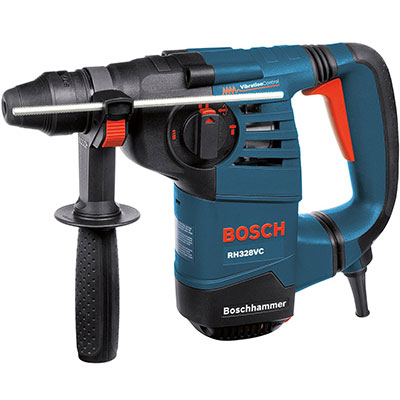
|
Best Rotary Drill
|
Bosch RH328VC
|
Features
|
Check Price at Amazon Review Bosch RH328VC Review Bosch RH328VC Review |
|
Best Right Angle Drill 
|
Best Right Angle Drill
|
Makita DA3010F
|
Features
|
Check Price at Amazon Makita DA3010F Review Makita DA3010F Review |
|
Best Drill Press 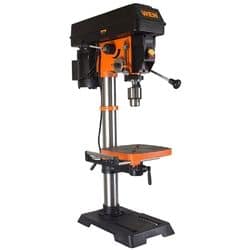
|
Best Drill Press
|
WEN 4214
|
Features
|
Check Price at Amazon WEN 4214 Review WEN 4214 Review |
The Best Drill — Buyer’s Guide
They just make holes in stuff — choosing the best drill should be pretty straightforward, right?
In truth, it’s more complex than you would initially believe.
This seemingly elementary power tool category is host to a plethora of cordless, corded, bench, and free-standing machines. Add to that tools for confined spaces, ferrous metals, and perpendicular boring, together with DIY-focused and trade-specific models — and you have an absolute cornucopia of units that would excite even the most phlegmatic of home-improvers.
Your target material, drilling location, speed and torque requirements, boring angle, and personal preferences all determine the optimum tool for your job. Furthermore, many models offer capabilities in addition to hole-making — including polishing, mixing, honing, etching, reaming, and cleaning.
Hence, choosing the consummation machine isn’t always clear-cut.
But don’t despair! I’ve put together below your complete 101 to the different types of drills and their uses — allowing you to make an impressively informed decision when making a drill purchase.
The Types of Drills
Generally speaking, the different kinds of drills can be broken down into six main drilling tool types — drill driver, hammer, rotary, right angle, press, and cordless. And, to complicate matters a little further, each of these boring sectors can themselves incorporate subsets of machines.
Here is your ultimate guide:
Drill/Driver Hand Drill
Often referred to as cordless machines when you check out drills for sale listings — although as we’ll discuss later, the cordless category is a much broader church — these are your standard home use boring tools.
As hinted by the name, these tools offer you two crucial abilities — drilling and driving.
Although mains-powered drill/drivers do exist — today, the only place you can pick them up is at a thrift store or garage sale. The rapid advancement of lithium-ion tech over the last decade has made corded models redundant, leaving the pleasingly portable battery-powered units as the sole heirs to the dual-purpose throne.
In my opinion, the drill-driver is the best portable drill for the casual DIYer and home user. The boring feature permits sufficient brawn to drill into soft metals, plastics, and timber — ideal for household jobs — although they’re unable to tackle dense brickwork and masonry.
Pleasingly affordable, they double up as electric screwdrivers and bolt tighteners. With the ability to control output speed through a finger trigger, you can tailor the intensity of your screwdriving to suit your base material. Furthermore, incorporating a reversible drive, you can use these units to remove screws too.
Additionally, the best electric drill drivers are compatible with a multitude of Dremel-esque accessories — such as mixers, brushes, sanders, and grinding wheels. This makes them excellent for finishing work and for tackling hobby and craft projects.
Pros of Drill/Drivers
- Straightforward operation — ideal for casual users.
- Ability to bore holes and drive screws.
- Creating anchor points in footings.
- Possible the best value drill format on the market.
- Often available as complete drill sets.
- Lightweight and the best craft drill.
Cons of Drill/Drivers
- Cannot tackle masonry work.
- Relatively low speed and torque compared to other machines.
- Require recharging.
- Will not accommodate SDS+ bits.
Hammer Drills
For light contractors and ardent DIYers, these are the ultimate hand held power drill units. Available in both corded and battery-powered models, these drill types provide two functions — rotational boring and hammer action.
The straightforward boring is what you would expect from a drill — allowing you to power into metals, plastics, acrylics, and timbers. Usually with greater speed and torque outputs than their drill/driver counterparts — they can handle denser materials and promise heightened durability for extreme use.
However, it’s the hammer action that gives these tools their name.
When activated, an internal clutch and gear mechanism rapidly drive the bit forward and backward — in effect, pounding your material while still rotating. This permits the power drill to smash away at brickwork, concrete, and masonry — materials that would be too robust for a driver-drill.
It’s this ability to address both soft and dense mediums that make these machines an ideal all-rounder — although admittedly, they’re not much use as drivers. Furthermore, often incorporating a 0.5-inch chuck, they can wield large diameter bits — making them useful for wood and brick channeling.
In addition to the corded and cordless models, there is a controversial third category — the rotary hammer (discussed below). While providing a hammer function, their internal mechanism is completely different to that of a standard hammer machine.
Many arguments, fisticuffs, and wars (maybe not wars) have been fought by drill aficionados on whether rotaries should be included in the hammer category. Those arguing for the case state that it’s obvious — they deliver a punching motion, so they’re hammer drills. Those against, point out that the units are closer to pneumatic tools than electric, and should have their own niche.
Where perhaps there is no right and wrong (actually there is, rotaries aren’t hammers — I’ll fight you over it), in general usage, hammer drills exclude rotary tools.
Cons of Hammer Drills
- Unsuitable for screwdriving.
- No demolition feature — unlike rotary machines.
- Cheaper models suffer motor burnout easily.
Rotary Drills
The rotary drill — or rotary hammer drill — is an absolute beast. This is the reason why out of all the different types of drills, boring enthusiasts often refer to them as the mothers of destruction.
Unlike their standard hammer counterparts, which use a clutch mechanism, rotaries utilize twin internal pistons to create the pounding action. In simple terms, they create an internal air pocket that propels the bit forward and backward — while also providing a shock-absorbing cushion to protect the driving head and motor.
This permits these power drills to deliver incredible forces — meaning they can attack the most stubborn of masonry and concrete. Furthermore, you can switch from rotational and hammer action into demolition mode, enabling you to crush and chip brickwork and cement — a capability lacking in traditional hammer machines.
Due to the phenomenal forces at work, these Goliaths of Grunt would normally wreck a standard masonry bit. Hence, all rotary drills feature an SDS+ chuck system that allows the boring/smashing head to slide along the vertical plane — protecting it from damage.
Furthermore, these brawny beasts incorporate extensive AVS (anti-vibration systems) to shield you against painful and damaging oscillations — and boast twin handles to enable you to tame these wild animals.
Pros of Rotary Drills
- Ultimate in brawn from all the different types of power drills.
- Demolishing capability.
- Pro-grade SDS+ chuck system.
- Impressive durability.
- The optimum masonry drill.
Cons of Rotary Drills
- Unsuitable for timber.
- Hard on the wallet.
- Not for the faint of heart.
- Useless for screwdriving.
- Speed is sacrificed for strength.
Right Angle Drills
If rotaries are the kings of power borers, right-angle drills are the daddies of small power drills.
From all the types of electric drills, these units are the masters of confined space work. Modeled to access the tightest of locations, the right angle tool gains its moniker from its 90-degree head.
Snub in design and typically no larger than two inches wide, they can squeeze into recesses that would typically be impossible to reach with a standard drill. This makes the machine ideal for working between floor joists, screwdriving inside engine bays, and boring beneath sinks.
Unlike most other types of hand drills, right-angle units feature a tool casing that’s perpendicular to the chuck — instead of inline. This creates a long as opposed to a wide body, permitting the unit to slip into restrictive areas. And, available in cordless, corded, and pneumatic models — there’s a type of drill for every close-quarter project.
Furthermore, unlike standard drilling tools types that incorporate a dual or single trigger — these small drill units boast a substantial and lengthy paddle throttle. Not only does this reduce the width of the machine — as there’s no obtrusive trigger — it also permits effortless use. Sufficiently sized to accept four-finger utilization — you can operate and alter the rotation rapidity however small the operational area.
Pros of Right Angle Drills
- The smallest of all kinds of drills — the ultimate mini drill.
- Lightweight.
- Can be used as a compact electric screwdriver.
- Accesses confined areas.
- Highly portable.
Cons of Right Angle Drills
- Unsuitable for masonry.
- Slowest and least powerful of all types of drilling tool.
- Struggles with metal materials.
- One-handed operation only.
Drill Press Units
For artisans, cabinet makers, machinists, and engineers — the drill press is the most accurate of all types of power drills.
Also known as pillar or pedestal presses, these machines feature a chuck or arbor positioned on a vertical column. Thus suspending the bit at 90-degrees above your target material.
Drill presses incorporate side-mounted rotating levers that lower or raise the boring head — depending upon which direction you turn. Not only does this allow for an accurate, perfectly perpendicular address, but it also permits you to deliver impressive force through the gear ratios with just one hand.
Your target material — plastic, metal, or timber — is positioned on an in-built table below the bit. The distance between the boring head and rear column — known as the ‘swing’ — determines the maximum width of sheeting, block, or plank the unit can accommodate.
There are three types of drill press — floor-standing, benchtop, and magnetic.
Of all the different drills presses formats, the floor-standing is the largest, most powerful, and with the greatest material capacity. The benchtop models are ideal for DIYers and those users with restricted ground space, and the magnetic units are ultra steel drills — featuring an inbuilt electro-magnetic foot for the ultimate in stability.
Pros of Drill Press Machines
- The most accurate of all type of drills.
- Can also be used to tap screws, ream, and mortise.
- Floor and bench models to suit available space.
- Featuring tilting tables to drill away from 90 degrees.
- Boast an efficient annular cutter instead of a drill bit.
Cons of Drill Press Machines
- Unsuitable for masonry work.
- Cannot be used horizontally — with the exception of mag drills.
- Incompatible with standard bits.
- Big drills — even the relatively compact benchtop models.
Cordless Drills
In strict terms, it’s not a true types of hand drill, as in themselves, they can cover multiple categories. But, since it is becoming a predominant feature of so many boring tools, it’s worthy of a quick discussion.
All the types of drill tools formats listed above are available as battery-operated models — with the exception of the drill press. The main reason isn’t the power demand but the design of the machine.
The primary advantage of cordless units is their portability — not being tethered to an extension cable or power outlet. However, pillar presses are so substantial — even the benchtops weigh in at around 90 pounds — that they’re designed to remain in-situ.
Hence, negating the requirement for transportation.
Nickel-cadmium batteries— also known as NiCad — were once the cordless drill staple. However, today they are virtually non-existent in the cell-driven category, being replaced by lithium-ion. Often referred to as Li-ion, these cells are lighter weight than Ni-Cad, offer longer running times, and don’t self-discharge — the most significant issue with Nickel-cadmium batteries.
Hence, when choosing your drill of choice, whatever format, the question is often whether to go corded or cordless. While battery-driven models offer greater flexibility, more portability, and the ability to operate away from power sources, they do have some disadvantages.
This includes being more expensive than their mains siblings, often requiring a separate purchase of cell and charger, smaller speed and torque output, and needing a supply of cells if your project takes longer than 45 minutes.
Pros of Cordless Electric Drills
- No extension cord or power socket requirements.
- Compact.
- Shields against the tripping hazards of mains cables.
- Highly portable.
- Ideal for high-level scaffold or ladder projects.
Cons of Cordless Drills
- Inconsistent power — power fades as the cell depletes.
- Heavier than cordless machines due to the battery.
- Shorter lifespan than corded — lithium cells last around three years.
- Lower torque and speed than comparable electric units.
- Exhausted batteries can lead to downtime.
- Harder on the wallet than corded.
Importance of Drill Safety
Cordless and electric drills, as mentioned in the opening paragraph, are excellent at making holes. The issue is, not only are they formidable when boring into masonry and timber — but they’re also quite efficient at plowing through your hand or fingers.
And, it’s not just your precious limbs and digits that are at risk, a wandering and wayward drill will happily drive into any part of your body — or shoot debris into your face and eyes.
Therefore when you buy drills for home, garage, or trade use — it’s crucial that you follow sensible safety precautions.
Here are my Nerd Tools DOs and DON’Ts for hazard-free drill operation:
DO:
- Follow your specific tool’s manufacturer’s instructions.
- Use a bit compatible with your drill.
- Ensure the chuck is sufficiently tightened around the bit.
- Wear safety goggles, a mask, and gloves.
- Keep drill ventilation slits free from debris.
- Disconnect power when changing drill bits.
- Ensure mains cords are away from the drilling area.
- Secure your workpiece adequately.
- Start slowly and gradually increase speed.
- Create a pilot hole before making larger bores.
- Use the correct drill type for your target medium.
- Check extension cord amperage is suitable for your corded drill.
DON’T:
- Hold your base material with your free hand — clamp it.
- Use bent bits.
- Overreach.
- Dangle the drill by the cord.
- Use in the rain or underwater.
- Engage high speeds on dense materials — keep it slow.
- Use an SDS+ bit in a standard chuck.
- Attach leaking or swollen batteries to a cordless machine.
- Point your drill at your wife, kids, or neighbor.
- Operate when drunk or high.
Conclusion
Drills are a crucial weapon in any serious DIYer’s or contractor’s tool arsenal.
Depending on the model, these versatile machines can bore, pound, demolish, tap, ream, polish, and hone. Whether you’re mounting a photo frame of your Aunt Mabel, or erecting a warehouse stanchion — there’s a tool for your project.
Regardless of cordless or corded, or the particular features of particular machines — your initial concern should be selecting the correct tool format to suit your requirements.
For household use, it’s the drill/driver. Enthusiastic DIYers and light contractors should opt for the hammer drill, and for extreme masonry projects, there’s no other tool than the rotary drill.
But it’s not all about brawn. Guys who need to work in confined spaces such as engine bays or beneath sinks should explore the right-angle drill category, and engineers and carpenters who demand the ultimate in accuracy need to go for a drill press.
Once you’ve selected your consummate machine format — check out our detailed guides on the category to explore the best drills for your needs.
The Best Drills FAQs
Q: What Is a Drill?
A drill features a rotating bit typically powered by a mains cable or lithium-ion cell. Applying pressure with the bit onto a target material allows you to create circular holes. Drills fall into the categories of drill driver, hammer, rotary, right angle, and drill pedestal press.
Q: Are Drill Bits Interchangeable?
Yes. Virtually all bits are interchangeable across models — depending on the chuck. Specific chucks or arbors, such as SDS and SDS+ require specialized bits.
Q: What Are Drills Used For?
Primarily drills are used for boring holes. However, they can be utilized for additional jobs such as:
- Mixing paint and plaster.
- Polishing.
- Sanding.
- Buffing.
- Reaming.
- Honing.
- Mortising.
- Screw tapping.
Q: Are Drill Bits Universal Between Brands?
Usually yes. Metal, timber, and masonry bits are typically cross-brand compatible. However, ensure that the chuck is designed for the style of bit. SDS and SDS+ borers need specific compatible chucks.
Q: What Is the Best Power Drill Brand?
According to the best drill reviews, expert industry opinion, and my own personal insight — the ultimate drills brands are Makita, Bosch, and DeWalt. Opting for one of these best drill brands usually delivers the advantages of excellent customer service, access to a wide catalog of spare parts, and impressive warranties.
Q: Do DeWalt Drill Bits Fit Black and Decker?
Yes. Standard DeWalt drill bits are compatible with Black & Decker standard chucks. Similarly, Black & Decker SDS+ drill bits will fit a DeWalt SDS+ chuck.
